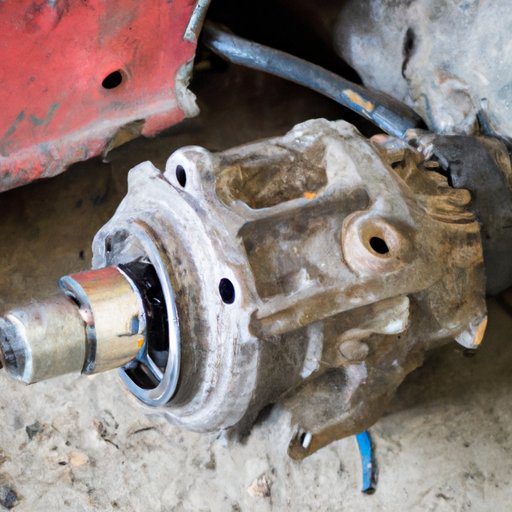Introduction
As a vehicle owner, one of the most important elements to maintain is the starter – a critical component responsible for starting your engine. A failing starter can quickly become an inconvenience, leaving you stranded or unable to start your car. In this article, we will explore how much it typically costs to change a starter, how to know if your starter needs to be replaced, factors that determine when to replace a starter, and tips on maintaining the health of your starter.
Signs that Your Starter Needs to be Changed and How to do it
There are a few telltale signs that your starter may need replacing, such as a slow cranking sound or a clicking noise. If you notice any of these symptoms, it is best to replace your starter as soon as possible. Replacing a starter is a relatively simple process, and you can do it yourself if you have experience with car repairs. Step-by-step instructions can be found easily online, and make sure to follow all safety precautions to avoid any injury. For those without experience or unsure of the process, it is best to seek professional help to ensure that the job is done correctly.
Factors that Determine When to Change the Starter of Your Vehicle
Several factors can affect the lifespan of your starter – including the make and model of your car, driving habits, and weather conditions. For example, newer cars tend to have starters that last longer, while older cars may require more frequent replacements. Drivers in extreme weather conditions or with frequent short trips tend to put more stress on their starters, leading to a shorter lifespan. To extend the life of your starter, it is crucial to be mindful of these factors and practice regular maintenance.
How Much Does It Typically Cost to Change a Starter?
The cost of changing a starter varies depending on several factors. If you do it yourself, the cost can range from $50-$200 for parts, and professional services generally cost $250-$500. The price can vary depending on the make and model of your car, location of service, and the chosen brand of replacement starter. If you are unsure about prices, it is always best to get a quote from multiple providers to determine the best course of action.
Steps for Testing a Starter Before Replacing it
Before replacing a starter, make sure to test it first. The testing process for starters involves checking the battery voltage, measuring the amperage draw, and testing the solenoid. If your starter is not the issue, you could be wasting money on an unnecessary repair. Sometimes it is best to leave testing to the professionals, but troubleshooting can be done with research and the proper tools.
How to Know if Your Starter Just Needs Repair and Not Replacement
In some cases, a faulty starter may be repairable instead of requiring an entirely new unit. Depending on the damage, it may just need a little bit of repair and cleaning. This can be a cost-effective alternative, but this is not always the case. Make sure to weigh the costs of repairing versus replacing your starter to decide which is the best course of action.
Expert Advice on Maintaining and Caring for Your Starter
Proper maintenance and checks can prevent most starter issues, which can reduce the likelihood of needing a replacement. To maintain your starter’s health, make sure to regularly check and replace battery terminals, maintain battery levels, and perform regular tune-ups. It also helps to turn off electronic devices such as lights, heaters, or AC when turning off your vehicle for added battery safety. By incorporating these practices, you can keep your starter running for longer and avoid preventable repairs.
Conclusion
Now that you know how much it typically costs to change a starter, the factors that affect their lifespan, and how to maintain the health of your starter, you should be equipped to make the right decisions to keep your car’s engine running smoothly. Regular care and checks of your starter can help extend its life and save you from costly repairs down the line. Remember to be diligent in your maintenance schedule and to seek professional help when unsure. By following these tips, you can keep your starter running and avoid getting stranded on the side of the road.
(Note: Is this article not meeting your expectations? Do you have knowledge or insights to share? Unlock new opportunities and expand your reach by joining our authors team. Click Registration to join us and share your expertise with our readers.)
